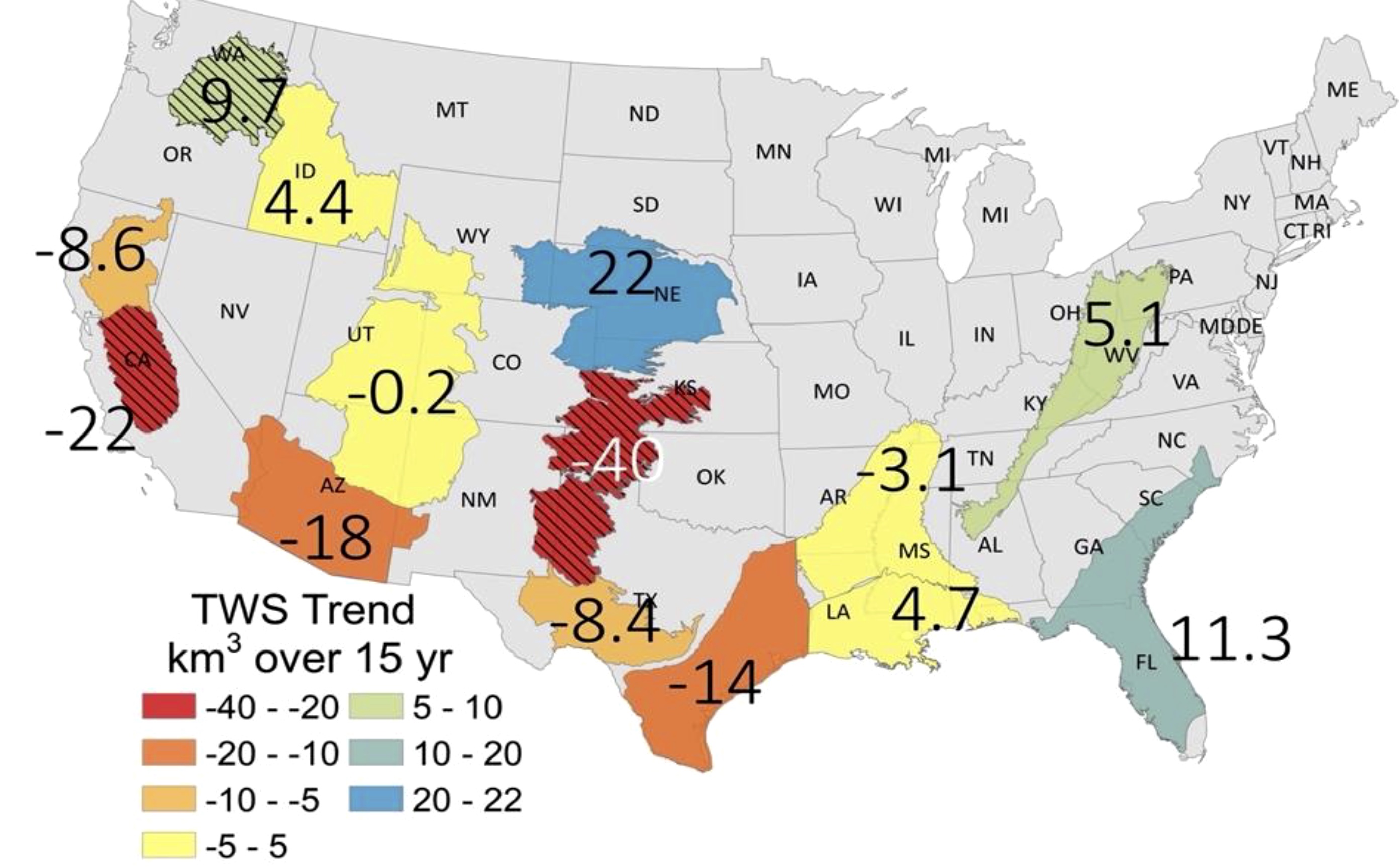Effects of Climate and Irrigation on GRACE-based Estimates of Water Storage Changes in Major U.S. Aquifers
Bridget R. Scanlon, Ashraf Rateb, Donald R. Pool, Ward Sanford, Himanshu Save, Alexander Sun, Di Long, and Brian Fuchs
Environmental Research Letters, https://doi.org/10.1088/1748-9326/ac16ff
Study Summary
Understanding climate and human impacts on water storage is critical for sustainable water resources management.
The objective of this study was to assess climate and human drivers of total water storage (TWS) variability from Gravity Recovery and Climate Experiment (GRACE) satellites considering drought severity from the U.S. Drought Monitor and irrigation water use in 14 major aquifers in the United States.
Results show that long-term variability in TWS tracked by GRACE satellites is dominated by interannual variability in most of the 14 major U.S. aquifers.
Low TWS trends in the humid eastern United States are linked to low drought intensity. Although groundwater pumpage for irrigation in the humid Mississippi Embayment aquifer exceeded that in the semiarid California Central Valley, a surprising lack of TWS depletion in the Mississippi Embayment aquifer is attributed to extensive streamflow capture.
Marked storage depletion in the southwestern and south-central United States totaled ∼90 km3, about three times greater than the capacity of Lake Mead, the largest U.S. reservoir. Depletion in the Central Valley was driven by long-term droughts (≥5 yr) amplified by switching from mostly surface water to groundwater irrigation.
Low or slightly rising TWS trends in the northwestern United States (Columbia and Snake River Basins) are attributed to dampening drought impacts by mostly surface water irrigation.
GRACE satellite data highlight synergies between climate and irrigation, resulting in little impact on TWS in the humid east, amplified TWS depletion in the semiarid southwestern and south-central United States, and dampened TWS depletion in the northwestern and north-central United States. Sustainable groundwater management benefits from conjunctive use of surface water and groundwater, inefficient surface-water irrigation promoting groundwater recharge, efficient groundwater irrigation minimizing depletion, and increasing managed aquifer recharge.

Why is this research important and why do the results matter?
- Understanding climate and human factors controlling water-storage variability is critical for developing suitable management plans.
- Sustainable groundwater development is more feasible in humid regions because of low drought intensities and large availability of surface water that can be captured to support irrigation.
- Long-term droughts punctuated by intense flooding are the norm in semiarid regions. Conjunctive use of surface water and groundwater, inefficient surface-water irrigation, efficient groundwater irrigation, and managed aquifer recharge offer approaches toward more-sustainable water management.
- Legacy depleted aquifers in the southwest and south-central United States provide large reservoirs, almost three times the capacity of Lake Mead, to store excess water from flooding.